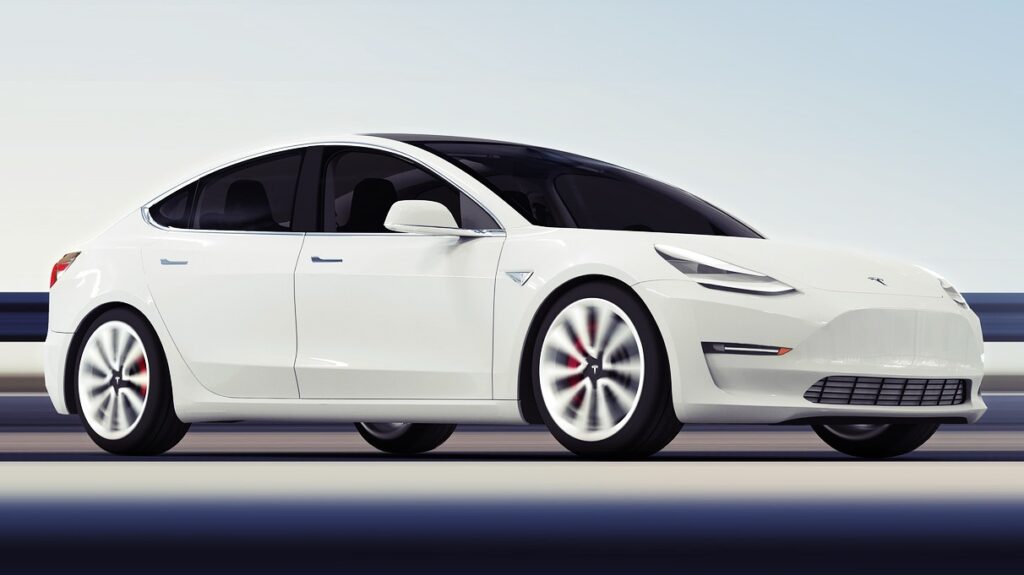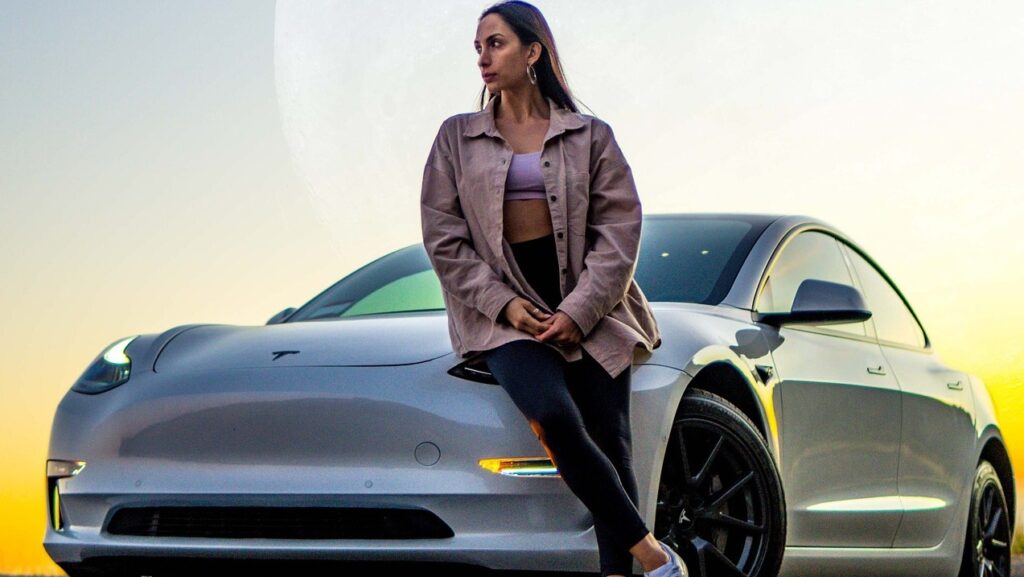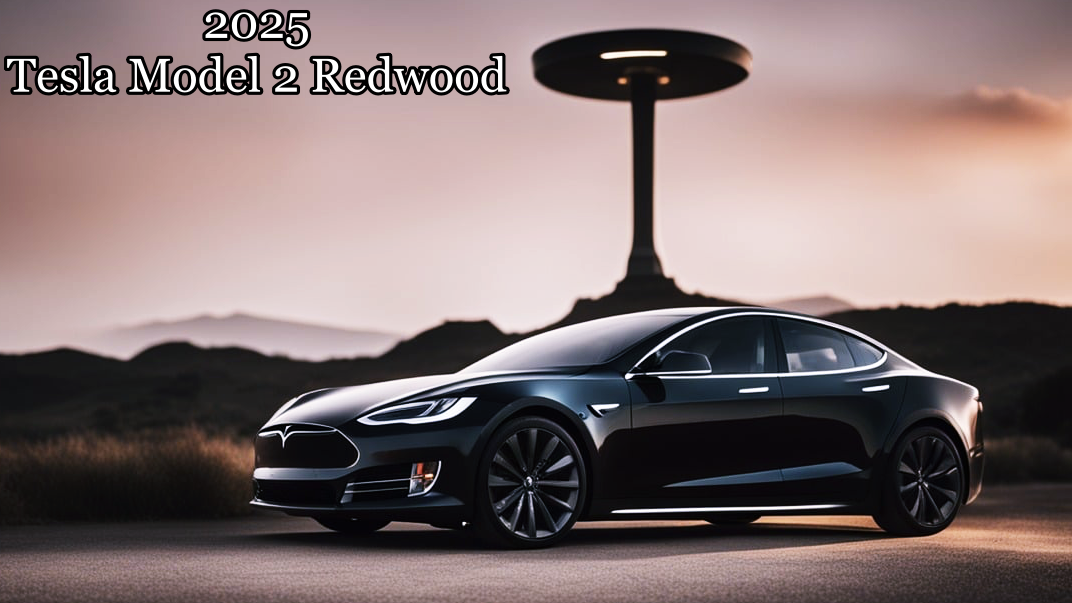Tesla’s upcoming Model 2 Redwood promises to be a game-changer in the electric vehicle (EV) market. With an ambitious goal of delivering a vehicle priced under $23,000, Tesla is banking on innovative manufacturing processes and cutting-edge technologies to make this vision a reality. But can Tesla actually pull it off?
In this post, we’ll explore the bold steps Tesla is taking to revolutionize both manufacturing and EV design, setting new standards for affordability, efficiency, and sustainability.
The Ambitious Vision for the Model 2 Redwood
10,000 Units Per Week: Tesla’s Manufacturing Goal
Tesla has set an aggressive production goal for the Model 2 Redwood, aiming to produce 10,000 units per week once manufacturing ramps up. This is no small feat, especially when considering the competitive pricing of the vehicle. To achieve this, Tesla is relying on groundbreaking innovations that could not only lower costs but also redefine how electric vehicles are built.
A Bold Promise: Under $23,000 Price Tag
The Model 2 Redwood is expected to be priced around $23,000, which is significantly more affordable than Tesla’s current offerings. This price point is critical for Tesla as the EV market becomes more competitive, especially with other manufacturers, like Stellantis and General Motors, also gearing up to release budget-friendly electric vehicles.

Tesla’s Innovative Technologies for the Model 2
A New Motor Design: Ditching Rare Earth Elements
One of the key innovations behind the Model 2 Redwood is its new motor design. Unlike traditional electric vehicle motors, which rely heavily on rare earth elements (REEs) for the magnets, Tesla’s new design completely avoids them. The goal here is to:
- Reduce costs by eliminating the need for rare, expensive materials.
- Decrease dependency on China, which controls a significant portion of the global REE supply.
Although rare earths are essential for creating power-dense magnets, Tesla’s strategy suggests a shift toward ferrite magnets or possibly even nanocomposite magnets. This could pave the way for a more sustainable and cost-efficient future in electric motors.
Radical Seat Construction: A Leap Forward in Efficiency
In addition to the motor, Tesla is also reinventing how seats are made. The conventional process of fitting seat skins over foam is labor-intensive and slow. To speed up the process, Tesla is leveraging its Optimus humanoid robot to assemble seats with increased precision and speed. But perhaps the most innovative solution lies in eliminating the need for separate seat skins altogether.
Tesla’s patented skin-foam architecture seeks to combine the cushioning and upholstery into a single, seamless layer. This simplifies the manufacturing process and reduces material waste. Furthermore, the conductive mesh layer embedded in the seat could provide heating or even occupant sensing—all while streamlining production.
Simplified Wiring Harness: A 90% Reduction in Complexity
Traditional wiring systems in vehicles are cumbersome, requiring miles of copper wire to connect various components. Tesla aims to dramatically reduce wiring complexity in the Model 2 by introducing a centralized wiring hub. This innovation:
- Cuts down on wiring by over 90%, reducing both weight and cost.
- Shifts the car to a 48V electrical system, which has been tested in Tesla’s Cybertruck and will now feature in the Model 2.
This step will not only simplify production but also reduce copper costs. With the price of copper fluctuating around $4.50 per kilogram, this could lead to savings of up to $180 per vehicle. In addition, a reduction in weight means less battery usage, further driving down production costs.
Mega Casting: Tesla’s Unboxing Manufacturing Technique
Tesla’s Mega casting technique is another revolutionary approach that will be utilized for the Model 2 Redwood. Instead of traditional assembly lines, Tesla uses large casting machines to create big chunks of the car, minimizing the number of parts that need to be assembled.
The unboxing method aims to:
- Reduce production costs by 50%, largely by minimizing manual labor and simplifying the assembly process.
- Save space in manufacturing, which could improve output without needing massive new factory expansions.
- Enhance scalability and manufacturing efficiency by relying on modular subunits instead of a series of smaller components.
This bold approach could set new standards for the EV manufacturing industry, with Tesla leading the charge toward faster, cheaper, and more efficient production.
What Other Innovations Can We Expect from the Model 2?
Battery Technology: Saku Polymer Batteries and Fast Charging
The Model 2 Redwood will feature Saku Polymer batteries, which are designed to be lighter, safer, and more efficient. These non-flammable materials will reduce the risk of fire while enhancing overall battery safety.
Tesla has also focused on fast charging capabilities, with the Model 2 expected to charge up to 60% in just 12 minutes, offering a range of 500 km on a single charge. This makes the Model 2 not only a more affordable option but also a practical one for longer trips.

Advanced Safety Features: Setting New Standards
Tesla has always prioritized safety, and the Model 2 Redwood will be no exception. The vehicle will incorporate advanced safety features, including an upgraded version of the automatic emergency braking (AEB) system. These improvements ensure that the Model 2 is not only an affordable choice but also one of the safest vehicles on the road.
Will Tesla Meet the $23,000 Price Point?
The Road Ahead: Can Tesla Deliver?
Tesla’s strategy is ambitious, but is it achievable? The company’s track record of innovation and production efficiency suggests that it could very well meet the $23,000 price point for the Model 2. With cost-cutting manufacturing methods, advanced battery technology, and a more efficient use of resources, Tesla is positioning itself to maintain a competitive edge in the EV market.
However, there are still hurdles to overcome, particularly with self-driving technology. Tesla’s push for full self-driving capabilities, including its latest FSD v12.5 software, could play a crucial role in the Model 2’s success. Tesla’s ability to deliver on its promises will depend on the successful integration of these technologies.
Redwood: A Dual-Mode System for Forward and Reverse Driving
The Redwood system is designed to work not only during forward movements but also when the car is reversing. This is especially beneficial in parking situations or scenarios with limited visibility, offering an extra layer of security for drivers. The system actively detects potential hazards while the vehicle is in reverse, ensuring that even in tight spaces, the vehicle responds swiftly to avoid collisions.
Improved Detection of Perpendicular Hazards
Tesla’s Redwood system doesn’t just rely on traditional sensors. It features improved detection of perpendicular hazards, making it more effective in identifying and responding to potential threats. For example, it can detect vehicles running red lights or cutting across lanes, offering timely warnings to the driver. This proactive system gives drivers confidence, especially in urban environments where fast-moving traffic can pose serious risks.
Tactile Feedback for Immediate Alerts
In addition to visual and audible warnings, the Redwood system incorporates tactile feedback. Whether it’s vibrations in the steering wheel or the seat, drivers will be alerted to potential dangers in a way that is both intuitive and immediate. This multisensory approach ensures that the driver has the best chance of reacting swiftly, even in the most critical situations.
A Clean and Healthy Interior: Tesla’s Automated Interior Cleaning System
Tesla isn’t just focusing on performance and safety; the company has also made significant strides in user experience. The Model 2 Redwood introduces a sophisticated automated interior cleaning system. This system integrates HVAC technology and UVC lights, circulating air throughout the cabin to filter out dust and dirt particles. The germicidal UVC lights work to eliminate bacteria and viruses, maintaining a cleaner and healthier environment inside the vehicle.
This feature is particularly beneficial for individuals with allergies, as it helps keep the air inside the cabin free of allergens. This innovative system makes it easy to maintain a hygienic and fresh environment inside the car, reducing the need for frequent manual cleaning.
Seamless Integration of Entertainment: Enjoy Your Music On the Go
Tesla has also improved the in-car entertainment experience. The Model 2 Redwood comes equipped with YouTube Music and Amazon Music integration, allowing both drivers and passengers to enjoy their favorite tunes directly from the car’s entertainment system. This seamless integration eliminates the need for external devices, making it easier for users to access their preferred music and entertainment. Whether you’re stuck in traffic or taking a long road trip, Tesla ensures that entertainment is just a tap away.
The Manufacturing and Production of the Tesla Model 2
The Tesla Model 2 is set to be produced at Giga Texas, alongside other Tesla models. While Giga Mexico will be another key production hub, the Texas plant is expected to be the first to roll out the Model 2. This is due to several factors, including Tesla’s wealth of technical talent in Austin, the rapid progress of construction, and the existing infrastructure in place at the facility. With production ramping up to thousands of vehicles per week, Model 2 is poised to enter the market sooner than expected.
New Battery Tech: Fast-Charging and High Performance
One of the most exciting aspects of the Model 2 is its battery technology. Tesla plans to use the 4680 cylindrical cells, which offer better energy density and efficiency. Additionally, reports suggest the Model 2 may feature Cattle’s Shanking Plus LFP cells, which are among the fastest-charging lithium iron phosphate (LFP) batteries on the market. These batteries can charge from 10% to 80% in just 10 minutes, making long trips more convenient and less time-consuming.
With an expected range of 250-300 miles, the Model 2 will strike a perfect balance between affordability and performance. Whether you’re commuting around the city or embarking on a weekend getaway, the Model 2 promises to deliver impressive range, all at an affordable price point.
The Design of the Model 2: A Compact, Affordable EV for the Masses
The Tesla Model 2 is expected to be a shrunken version of the Model 3 or Model Y, designed with cost-efficiency in mind. Potential body styles include a compact sedan, hatchback, or a more space-efficient design. While the interior will still feature Tesla’s signature minimalist style, it may be pared down to reduce costs. Expect fewer premium add-ons like heated rear seats or adjustable seating, but the core Tesla experience will remain.
Full Self-Driving (FSD) Capabilities
Tesla is also focused on equipping the Model 2 with the necessary hardware for Full Self-Driving (FSD). The FSD feature will likely be available as a subscription service, enabling drivers to unlock advanced driving capabilities for a recurring fee. This makes Tesla’s cutting-edge autonomous driving tech accessible to a broader range of customers, ensuring that even the most affordable Tesla models benefit from the latest advancements in driving technology.
Competing with Affordable EV Rivals
As Tesla prepares to roll out the Model 2, it faces tough competition from Chinese automakers like BYD, which has already established itself as a leader in affordable EVs. To stay competitive, Tesla is focusing on new manufacturing processes that will drastically reduce costs. For example, Tesla’s “unboxed” production technique aims to save up to 50% on factory construction costs and reduce assembly line times, helping to produce the Model 2 at a lower price while maintaining high production volumes.
Cost-Reducing Innovations
In addition to manufacturing innovations, the Model 2 will leverage lighter materials and cost-efficient battery technologies to further reduce overall production costs. As Tesla continues to develop next-generation drivetrains and battery tech, the Model 2 is expected to not only meet but exceed the affordable EV standards set by Chinese manufacturers.
Conclusion: The Future of Affordable Electric Vehicles
The Tesla Model 2 Redwood is shaping up to be one of the most exciting developments in the world of electric vehicles. With a focus on safety, performance, and user experience, Tesla’s upcoming affordable EV promises to redefine the future of electric driving.
Whether it’s the Redwood braking system, the automated interior cleaning system, or the integration of cutting-edge battery technology, the Model 2 is a comprehensive solution for those looking for an affordable, yet technologically advanced, EV.
As the EV market heats up with competition from General Motors, Stellantis, and BYD, the Model 2 could be the vehicle that secures Tesla’s continued dominance. Will Tesla be able to deliver a car under $23,000? Only time will tell, but the stakes are high, and the innovations are promising.
Read More:


1 thought on “2025 Tesla Model 2 Redwood: Elon Musk Unveils the Affordable Game-Changing EV”